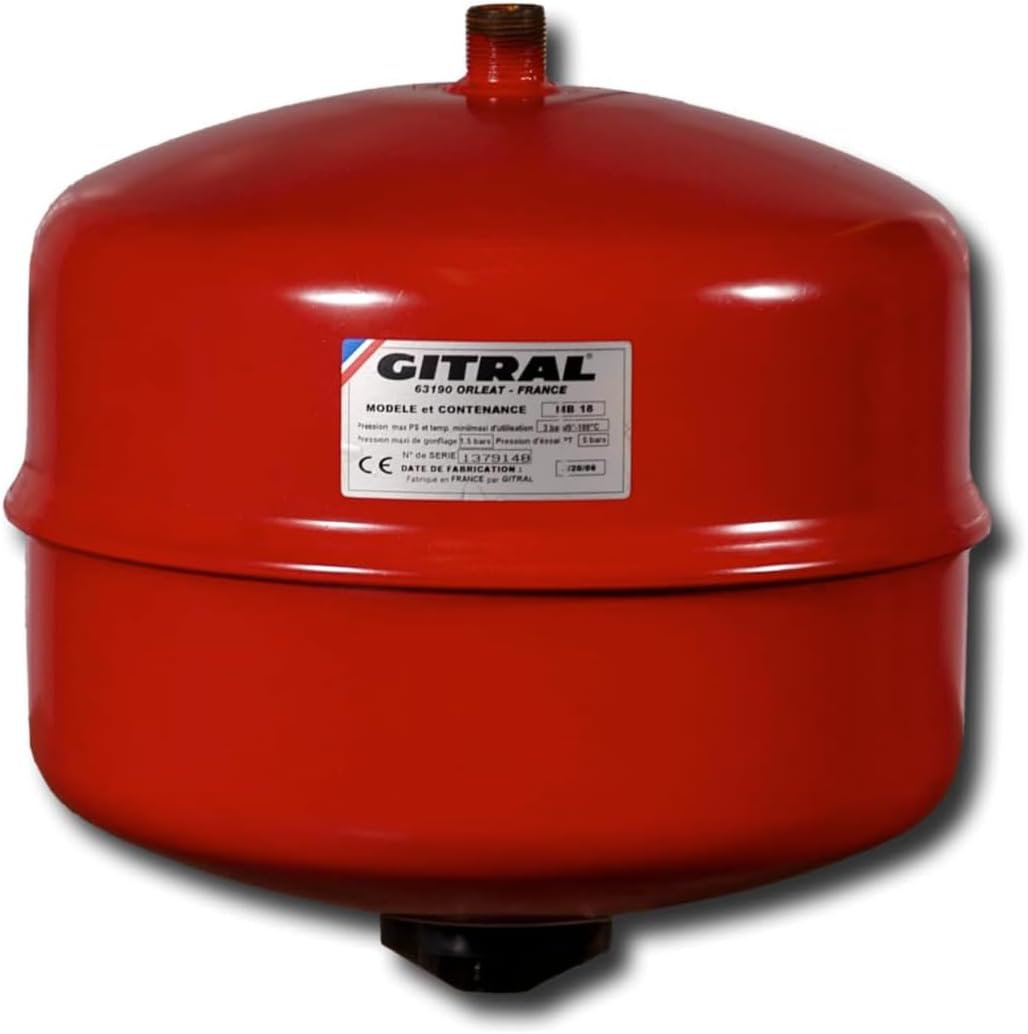
Expansion tank: role, installation and maintenance
Share
Expansion tank: role, installation and maintenance
In a central heating or domestic hot water system, the expansion tank is a discreet but essential part. Without it, the pressure in the circuit would quickly rise, causing breakdowns, leaks, or even the boiler to break down. Let's discover its role, how it works, and how to properly install and maintain it.
What is an expansion tank?
An expansion tank is a metal reservoir, usually cylindrical or spherical in shape, which absorbs changes in the volume of water as it expands under the effect of heat.
It consists of two parts separated by a flexible membrane:
- water side : connected to the heating circuit,
- air or nitrogen side : pre-inflated under pressure.
As the water heats and expands, it pushes against the membrane, compressing the air. The vessel thus stores the excess volume and prevents excessive pressure buildup in the system.
What is an expansion tank used for?
👉 Its main functions are:
- Absorb changes in water volume due to temperature.
- Maintain stable pressure in the heating system.
- Protect components : boiler, piping, radiators, safety valve.
- Prevent leaks and damage caused by overpressure.
💡 Without an expansion tank, hot water would cause the safety valve to trip frequently, resulting in water loss and risk of damage.
The different types of expansion tanks
- Fixed membrane : welded membrane, the assembly must be replaced if the membrane is damaged.
- With interchangeable membrane : more durable, because only the membrane can be changed.
- Sanitary (for domestic hot water) and heating (for closed circuits).
Where to install an expansion tank?
The expansion tank must be placed on the heating circuit , most often:
- near the boiler (most common location),
- on the return circuit, before the circulation pump, for optimal efficiency.
⚠️ It must be accessible for checks and re-inflation.
How to install an expansion tank?
Materials needed:
- Suitable expansion vessel (volume in liters depending on the power of the circuit),
- Fittings and joints,
- Bicycle pump or compressor with pressure gauge (to adjust air pressure),
- Tightening wrenches.
Main steps:
- Turn off the boiler and let the system cool.
- Turn off the water supply and drain if necessary.
- Check the air pressure of the vase (often 1 bar as standard, to be adjusted according to the installation).
- Install the vase on the heating return, securing it correctly.
- Reconnect the circuit and refill with water.
- Bleed the radiators to remove air.
- Restart the boiler and check the pressure (must remain between 1 and 2 bars depending on the system).
Expansion tank maintenance
An expansion tank has an average lifespan of 8 to 10 years . To extend its reliability:
- Check the air pressure (via the tire-type valve) every 1 to 2 years.
- Check that the membrane is in good condition (if the valve trips frequently, this may indicate a defective vessel).
- Replace the vessel or membrane if there is a regular loss of pressure.
💡 A faulty vessel often causes unstable pressure (strong oscillations between cold and hot) and repeated triggering of the safety valve.
Conclusion
The expansion tank is a vital component in any heating or domestic hot water system. Properly sized, installed, and maintained, it ensures the longevity of your equipment, the stability of your system, and your thermal comfort.
👉 In our shop, you will find a range of expansion tanks adapted to your needs, with or without interchangeable membrane.
